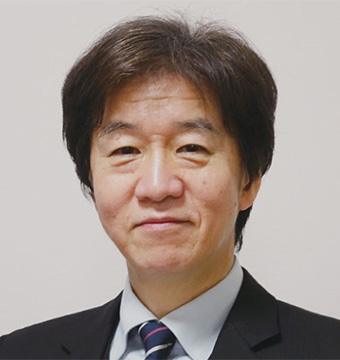 Professor Nagatsuma graduated from the Faculty of Engineering in Kyushu University in 1981, completed the doctoral course at the same graduate school in 1986, and joined Nippon Telegraph and Telephone Corporation in the same year. He became the Senior Research Engineer, Supervisor at the NTT LSI Research Laboratories in 1996, Distinguished Researcher / Senior Research Engineer, Supervisor at the NTT Telecommunications Energy Laboratories in 1999, Group Leader / Senior Research Engineer, Supervisor at the NTT Microsystem Integration Laboratories in 2002, and since 2007 has been active as a professor at Osaka University.
Professor Nagatsuma graduated from the Faculty of Engineering in Kyushu University in 1981, completed the doctoral course at the same graduate school in 1986, and joined Nippon Telegraph and Telephone Corporation in the same year. He became the Senior Research Engineer, Supervisor at the NTT LSI Research Laboratories in 1996, Distinguished Researcher / Senior Research Engineer, Supervisor at the NTT Telecommunications Energy Laboratories in 1999, Group Leader / Senior Research Engineer, Supervisor at the NTT Microsystem Integration Laboratories in 2002, and since 2007 has been active as a professor at Osaka University.He is a pioneer of expanding the use of high-frequency radio wave (teraherz wave) for large-capacity wireless communications.
Despite the depletion of frequency resources as the capacity of wireless communication has increased, the use of ultra-high-frequency waves such as terahertz wave has not progressed because it was difficult to generate and detect terahertz wave using either optical or electrical devices. So first of all, he has developed a high-purity, high-stability, frequency-tunable ultra-100 GHz optical subcarrier signal generation by utilizing the optical components developed for optical fiber communication. Then, he proposed a wireless transmitter that combines this technology with a module that integrates a high-speed photodiode and an antenna, and it has been realized as a large capacity wireless communication system that had not existed before. He also led the development of a 120 GHz high-sensitivity receiver based on MMIC using HEMT (High Electron Mobility Transistor) technology. Then, he demonstrated the extension (>5 km) of a 10 Gbit/s class wireless link outdoors under R&D for Expansion of Radio Wave Resources, organized by the Ministry of Internal Affairs and Communications, Japan.
These achievements were summarized in the ITU-R technical report, and promoted international use for communication in the same frequency band. Furthermore, he also contributed to the discussion of mobile communication beyond 5G. In addition, he developed the 300 GHz-wireless link for the first time in the world. This achievement has triggered a worldwide breakthrough in the research and development of 100 Gbit/s-class wireless communication using terahertz waves. Recently, he successfully demonstrated the 600 GHz-wireless link using ultra-high-speed photodiode technology, then keeps showing the possibility of high-capacity wireless transmission using the terahertz wave.
Based on the above achievements, he has been awarded the Director of Science and Technology Agency Award, the IEICE Achievement Award, the Maejima Hisoka Award, Prize for Science and Technology, Research Category, The Commendation for Science and Technology by the Minister of Education, Culture, Sports, Science and Technology, the IEICE Fellow, the IEEE Fellow, etc. Furthermore, he has led technological trends in the field through numerous experiments and demonstrations, and has served as chairman of the Committee of Science Council of Japan, program committee member and chair of international conferences, and is making a great contribution to the development of this field.
As mentioned above, we are convinced that his achievements in the field of information and communication are extremely remarkable, and that he is worthy of receiving the IEICE's Distinguished Achievement and Contributions Award.